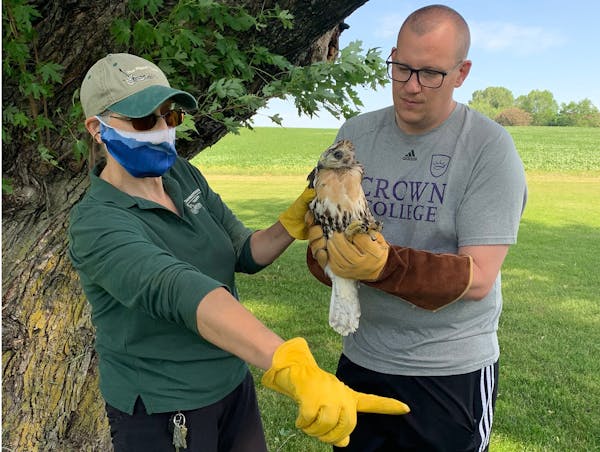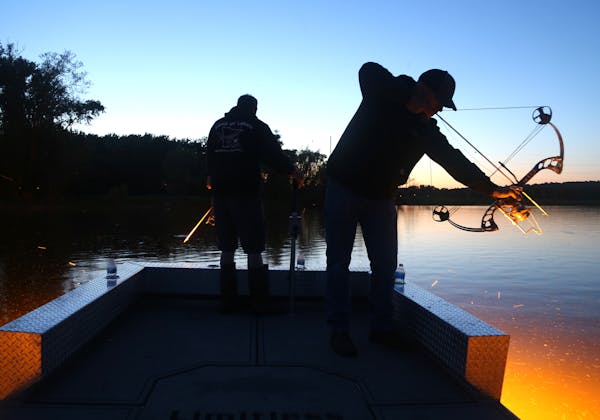Minnesotans who in recent months believe they have toggled up every movie worth watching should give home entertainment one more chance by searching for the 1966 classic "King of Hearts."
A French production, the movie is exemplary both as a comedy and life lesson, especially when viewed through a summer 2020 lens, when, as in "King of Hearts," nothing seems to make sense, yet, paradoxically, as one reviewer noted, nothing doesn't.
I was thinking of "King of Hearts" the other day after listening to a recording of the June 4 meeting of the South Dakota Game, Fish and Parks (GFP) Commission.
In it, commission members agreed with Game, Fish and Parks Department Secretary Kelly Hepler to cancel without public input the state's 2020 pheasant brood survey and perhaps future such surveys as well.
Among the commission's justifications was that too often in recent years the survey has shown declines in pheasant numbers, which in turn, and quite logically, prompted falloffs of hunter numbers in the nation's No. 1 pheasant state.
Of particular concern are nonresident South Dakota pheasant hunters who spend freely while in the state and who now outnumber resident ringneck hunters.
South Dakota GFP commission members reason that if they don't reveal the state's annual pheasant brood counts, the out-of-staters won't know in a given year whether South Dakota is flush with pheasants or not, forcing the vagabond nimrods, essentially, to come to the state, with their cash, to find out.
Nixing the brood counts also serves well the imminent launching by South Dakota of an expensive, multiyear marketing campaign intended to return pheasant hunters en masse to the state, thereby ringing motel and other business owners' cash registers at a pace reminiscent of the state's pheasant hunting glory days.
Summing up the group's mind-set regarding pheasants, one attendee of the June 4 meeting said, "We're running a business here."
Familiar to few people other than wildlife managers and hunters, pheasant brood surveys are actually part of a larger tally of farmland wildlife undertaken by wildlife agencies (including Minnesota's), usually in August.
During the surveys, scores of wildlife managers, technicians and volunteers drive predetermined routes at specific times, counting pheasants and pheasant broods, among other wildlife. The intent is not to tally every bird in a given county but to form population indexes that underlie important trend analyses.
For example, the loss in recent years of hundreds of thousands of Conservation Reserve Program (CRP) acres has correlated to a decline in pheasant numbers everywhere, as well as the loss of songbirds and other wildlife.
Whether in all instances the CRP losses have had a causal negative effect on farmland wildlife, or whether the relationship is less direct, ultimately is unimportant. What's important, as costly, taxpayer-funded state and federal policies such as CRP and other farm and related programs are considered, is that wildlife surveys and other data are available to substantiate the initiation, continuation or discontinuation of these and other programs.
Unabashedly, it would appear, the commission's decision to end South Dakota brood surveys also assumes hunters are, well, stupid.
Perhaps in the first year that TV and other advertisements appear recalling the wonder of South Dakota pheasant hunting, when autumn prairies were golden, the sun was warm and birds were flying, hunters who have been absent in recent seasons might return to the South Dakota ringneck fold.
But if there are no birds, or too few birds, they won't be fooled a second time, marketing campaign or not.
More realistically, pheasant hunters aren't flocking to South Dakota in numbers they once did because some years ago, when corn was bringing $7 a bushel, many of the state's farmers put every inch of ground they could under a plow.
Aiding and abetting this run for the roses was the usual cabal of politicians, bankers and farm-chemical slickers for whom native grasslands are considered wasted space, not, as they more accurately are, wildlife incubators, flood preventers and water cleansers.
The commission should be aware, also, that hunter numbers are declining everywhere, not just in South Dakota, and it's unlikely that reasons for the losses — principally urbanization, single-parent households, lack of time and money, and kids' addiction to electronic gizmos — will be overcome by 30-second spots depicting roosters cackling into cobalt skies while scattergunners grin.
South Dakota could — as could Minnesota and other states — address these real reasons for hunting's decline by developing a marketing campaign that speaks clearly to parents about the perils of not spending time with their kids, especially outdoors, and about the perils to all of us of federal farm policies that reduce to afterthoughts soil loss and water conservation.
In "King of Hearts," set near the end of World War I, inhabitants of a small French town flee, leaving, as they do, the doors of the local insane asylum open.
The asylum dwellers quickly assume, and not inadequately, the roles of townspeople as they greet an unsuspecting Scottish soldier sent to defuse a bomb in the town square.
At the movie's end, the viewer is left to muse about craziness and who is more so, those who are free and in charge of the rest of us, or those who are considered mad and confined.
Which is why I thought of "King of Hearts" after listening to a recording of the June 4 meeting of the South Dakota Game, Fish and Parks Commission.
danderson@startribune.com

Anderson: Celebrate Earth Day by rekindling real connection to nature
Anderson: Anglers protesting tough new Mille Lacs rules are wrong

Anderson: Courts, not politicians, should rule on Red Lake, White Earth lands

Anderson: Multimillion windfall gets invasive carp deterrent moving
![A young whitetail deer searches for food as another blanket of snow coats the arrowhead. ] Minnesota -State of Wonders, Arrowhead in Winter BRIAN PETE](https://arc.stimg.co/startribunemedia/WK32UWWY6FKNWJUIYCJ6ZPT4AU.jpg?h=91&w=145&fit=crop&bg=999&crop=faces)


